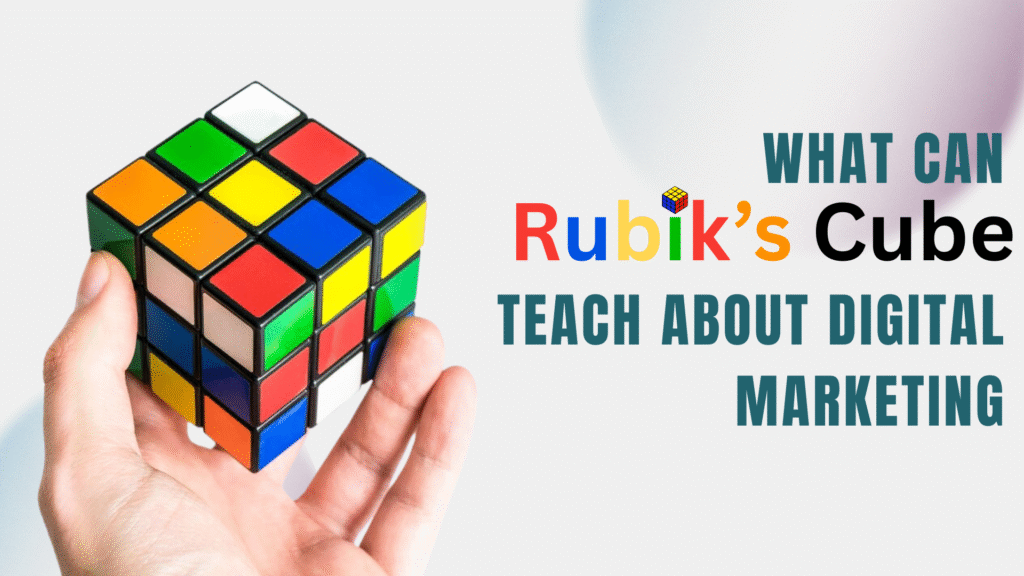The Rubik’s Cube, a 3D puzzle invented by the Hungarian architect and professor Erno Rubik is one of the most loved toys globally. It consists of six faces each of a different colour with nine smaller squares which has to be solved. The objective is to twist and turn the cube to return it to its original state, where each face is a solid colour. Just as solving the same needs strategy, adaptability, and an eye for patterns, excelling in the field of digital marketing demands a similar mindset. Let’s explore how the principles behind solving a Rubik’s Cube can guide and inspire your digital marketing efforts.
1. Strategy is essential
To solve the puzzle, a proper strategy is necessary or one might solely be twisting the same to no avail. Similarly, in digital marketing, an effective campaign begins with a well-thought-out strategy. This includes defining your goals, identifying your target audience, and mapping out the steps to achieve them.
2. One move affects the other
While solving a Rubik’s Cube, no move can exist independently. One move is bound to affect the other. Turning one face impacts other pieces. The same goes for digital marketing. One must ensure that all marketing components—SEO, content, social media, and ads—work cohesively. Adjustments in one area influence the entire ecosystem. Evaluating the ripple effects of every change or campaign is necessary to make any move successful.
3. Recognising the changes and patterns
An expert cube solver recognizes patterns to predict outcomes and plan their next moves. In digital marketing, data serves a similar purpose. Understanding audience behaviour, engagement trends, and conversion metrics helps marketers optimize strategies and predict success. To find out data, tools like Google Analytics or Meta Analytics must be used.
4. Trial and Error are necessary
No person, who tries solving a cube can do so on their first attempt. Trial and error are part of the learning process, and the same applies to digital marketing. Experimentation, testing, and learning from failures are key to finding what works. Running A/B campaigns are a necessary to find the right strategy as a digital marketer.
5. Adaptability Is Crucial
Every Rubik’s Cube configuration is unique, requiring flexibility to adapt your approach. Similarly, digital marketing is a constantly evolving field. Algorithms change, consumer behavior shifts, and new platforms emerge, demanding marketers stay agile.
6. Speed Comes With Practice
Cube-solving speed increases with practice, as solvers refine their techniques and muscle memory. In digital marketing, experience and familiarity with tools and platforms allow you to work more efficiently.
The Rubiks’ Cube is not just a toy. It is a metaphor for understanding the complexities one might face a digital marketer. Whether it’s recognizing patterns, adapting to new challenges, or breaking down tasks into manageable layers, the lessons from solving the cube can help marketers approach their craft with clarity and confidence. Just as mastering the Rubik’s Cube requires persistence and strategy, excelling in digital marketing demands a thoughtful, data-driven approach.

